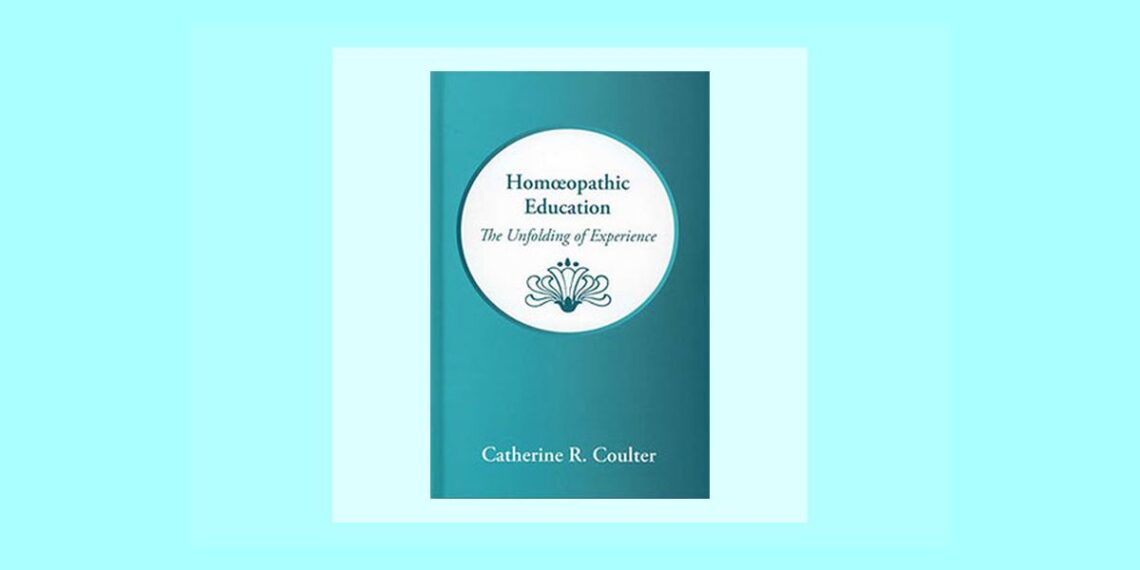Author: Catherine R. Coulter
Publisher: Ninth House Publishing
ISBN: 9780971308251. Hardback, 319 pages
Price:$47.95 USD
Reviewed By: Alan V. Schmukler
—————————————
Those who have read Catherine Coulters “Portraits of Homeopathic Medicines” will find again in this book her eloquent style, rich with allusions to characters and occurrences from history, literature, science or the bible.
In this work she takes stock of the current state of homeopathic education. She follows the student from that first stage of wonder and enthusiasm with its beginners’ luck through stages of self doubt and even disillusionment, to an emerging “strengthening stage”.
Ms. Coulter acknowledges the value of classroom learning, but also finds it wanting and describes its deficiencies and pitfalls. For instance, the student cannot question the patient nor observe how she responds. Lecturers often present extraneous information or give excessive warnings. The more prominent the teacher, the more an intellectual dependence may develop. She sees all this leading to a lack of confidence, fear about prescribing and an inflexible adherence to theory . Coulter wants students to be good observers, not overly taught.
The author believes that once the tenets of homeopathy are firmly grasped, experience with patients is absolutely essential. Her solution is the preceptorship, where the student apprentices with an experienced homeopath. Here, the reality and complexity of live cases hones true skills. Coulter has been doing long term preceptorships for physicians since 1972, and sees this method as rewarding and challenging for both teacher and student.
She cites the advantages of this method, not the least of which is learning to recognize the personality types. The student also gets to see the patient over time, learning what worked and what didn’t. He can safely participate in case taking without ultimate responsibility, and his errors are corrected on the spot. Finally, he has a chance to witness homeopathy’s effectiveness in severe illnesses, which builds confidence in this art. To illustrate this last point, she cites a case of gangrene where the single remedy, Secale, was able to prevent loss of a leg.
The author stresses that the realities of practice are not the same as the ideal, and gives numerous examples to drive that home. On the realities of posololgy, she offers as example, that for some sinus infections Kali bi may have to be repeated in high potency as many as eight times in a day.
Coulter addresses the unusual side of remedies, which we should also recognize. For example, Calcarea’s “philosophical calm, underlying the types surface insecurity.” Comparative materia medica is found throughout this work and used to demonstrate subtle distinctions. For instance, she discusses the variety of ways that different remedies respond to a compliment (Graphites turns it into a joke).
We are treated to in-depth portraits of Argentum nitricum and Baryta carbonica, each with fresh insights from her archetypal perspective. Baryta is the “non-rugged individualist” trying to ignore what he won’t conform to. Argentum is the poor relative with a defeatist attitude. These portraits are finely crafted gestalts, easy to recognize and remember.
In a complex portrait of author Charles Dickens, she tracks his evolution through four remedy personalities and suggests the forces that shifted him each time. In doing this she extrapolates from his social interactions, changes in writing style, autobiographical material and his various health problems.
One of the things which make this book so pleasurable, is that virtually every page has some case example, materia medica morsel, or other reference to illustrate the point. She follows the dictum, “Don’t tell me, show me”. If you are a student, or a teacher this book is especially pertinent. Ms. Coulter’s dream is that there would be homeopathy preceptorships in every country. I hope this work will inspire others to further that dream.
Catherine R. Coulter’s other works include:
Portraits of Homeopathic Medicines vols 1 (1985), 2 (1988), 3 (1993)
Nature and Human Personality
A Homeopathic Approach to Cancer
Homoeopathic Sketches of Children’sTypes




